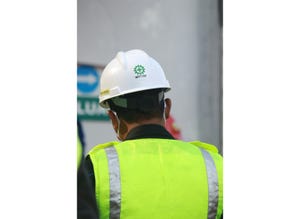Dry Battery Electrode Process in Action
See how the film for the li-ion battery electrode is rolled and goes through the process.
Dry battery electrode (DBE) is a newer concept and technology in the battery industry that innovates electrode fabrication as a “powder to film” route. The process shortens the time and energy it takes, and minimizes space needed, compared with wet process fabrication (coating the electrode foil with a wet, chemical slurry).
There are many benefits to dry battery processing, including time, space, and energy savings.
TOB New Energy's dry electrode technology is to mix electrode active material, conductive agent, and battery binder to get electrode powder, without using any solvent, and then roll the dry electrode powder into the electrode film. After that, the film of dry electrode material is rolled to the appropriate thickness.
Afterward, conductive adhesive coating on the current collector foil and drying it. The last part of the process is to laminate the dry electrode film and current collector foil together to get the finished dry electrode.
This video by TOB New Energy shows the preparation for the process, where you see the film on the rolling press and the final results of the dry battery electrode.
About the Author(s)
You May Also Like




